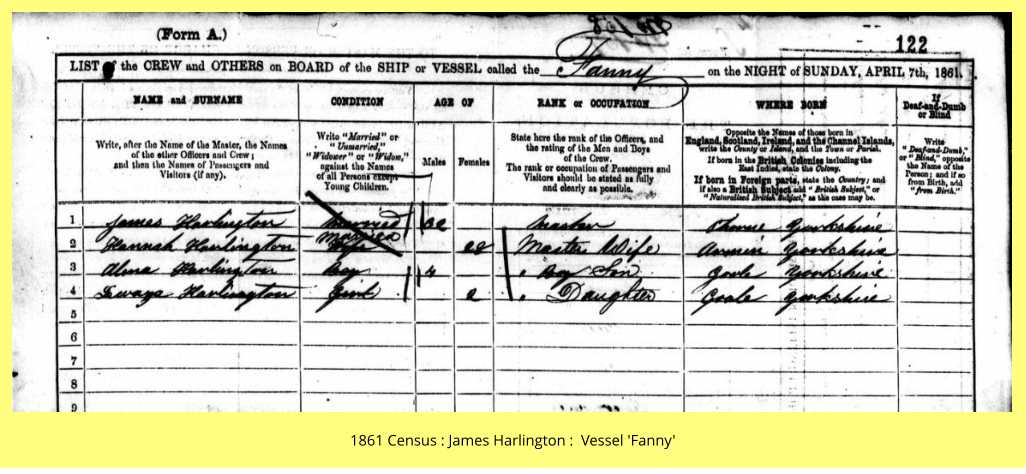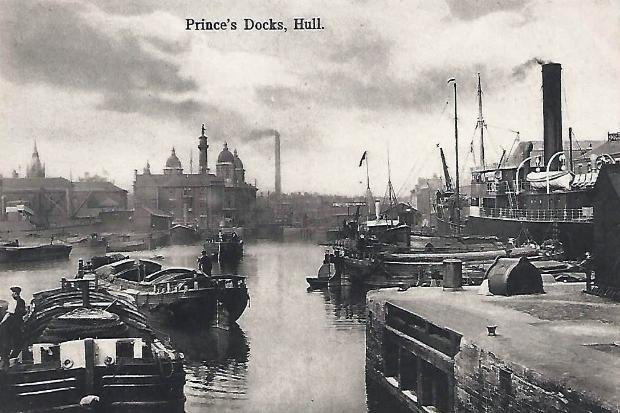James Harlington (1829 - 1904)
James Harlington has not been found in the 1851 Census. Like many other male Harlingtons he might well have been away on a ship or boat.
1861 Census
On the night of the1861 Census James, his wife Hannah and their two children, Alma (aged 4) and Louisa? (aged 2) were aboard the Humber keel
'Fanny' moored in Prices Dock, Hull.
Name:
Fanny
Port or place belonging to:
Hull
Tonnage:
90
Description (Steam / Sailing):
Keel River Trade
Place / date delivered:
Hull April 4th 1861
Position at midnight:
Lying in Prince’s Dock
Typically, a keel is a flat bottomed boat, between fifty four and sixty one feet in length. They were usually between fourteen feet four inches and fifteen feet six inches wide, and
between six feet six inches to seven feet six inches deep. Originally, they would have been "clinker" built vessels. This means they were constructed from wooden boards which
overlapped each other around a wooden hull. The gaps between the boards would have been filled with a waterproof material, or "caulking". Later, they would be constructed
from other materials, including iron and steel.
Generally speaking, a keel would be rigged with a square sail on a single mast, whereas the sloop, a similar type of craft, would be rigged with two masts.
The cargoes carried by the keels as they navigated between Sheffield, Doncaster, Grimsby and Hull, were mostly grain and coal, but many would dredge sand and gravel from the
riverbed of the Trent, which they then sold in Grimsby as aggregate for the building trade.
Most keelmen started out as hired boatmen, working for companies or consortiums, and it was the dream of every keelman to eventually own his own vessel. Being a keelman
was not just a job for the man of the family though. It was common for married men to have their wives as first mate when aboard their boats, (no doubt they also served as
chief cook, bottle washer and child minder), which could mean the whole family spent more time afloat than in their houses on the bank side. Hired hands would be paid for
performing other tasks around the boat, such as loading and unloading cargo.









